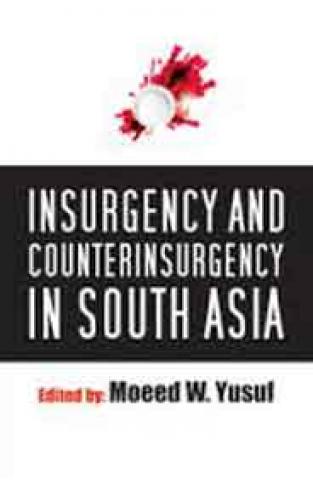Insurgency and Counterinsurgency in South Asia
By: Moeed Yusuf
-
Rs 1,015.75
- Rs 1,195.00
- 15%
You save Rs 179.25.
Due to constant currency fluctuation, prices are subject to change with or without notice.
| Book | |
| What's in the Box? | 1 x Insurgency and Counterinsurgency in South Asia |
Insurgency and Counterinsurgency in South Asia
By: Moeed Yusuf
Rs 1,015.75 Rs 1,195.00 Ex Tax :Rs 1,015.75
Brokering Peace in Nuclear Environments: U.S. Crisis Management in South Asia
By: Moeed Yusuf
Rs 6,375.00 Rs 7,500.00 Ex Tax :Rs 6,375.00
Zubin Mehta: A Musical Journey (An Authorized Biography)
By: VOID - Bakhtiar K. Dadabhoy
Rs 892.50 Rs 1,050.00 Ex Tax :Rs 892.50
Legacy of Maulana Azad: Islam Pluralism Nationhood
By: Mushirul Hasan
Rs 1,046.25 Rs 1,395.00 Ex Tax :Rs 1,046.25
The Origins of Political Order From Prehuman Times to the French RevolutioN
By: Francis Fukuyama
Rs 4,045.50 Rs 4,495.00 Ex Tax :Rs 4,045.50
Legacy of Maulana Azad: Islam Pluralism Nationhood
By: Mushirul Hasan
Rs 1,046.25 Rs 1,395.00 Ex Tax :Rs 1,046.25
No recently viewed books available at the moment.
Zubin Mehta: A Musical Journey (An Authorized Biography)
By: VOID - Bakhtiar K. Dadabhoy
Rs 892.50 Rs 1,050.00 Ex Tax :Rs 892.50
Insurgency and Counterinsurgency in South Asia
By: Moeed Yusuf
Rs 1,015.75 Rs 1,195.00 Ex Tax :Rs 1,015.75
Brokering Peace in Nuclear Environments: U.S. Crisis Management in South Asia
By: Moeed Yusuf
Rs 6,375.00 Rs 7,500.00 Ex Tax :Rs 6,375.00
Legacy of Maulana Azad: Islam Pluralism Nationhood
By: Mushirul Hasan
Rs 1,046.25 Rs 1,395.00 Ex Tax :Rs 1,046.25















-120x187.jpg?q6)











-120x187.jpg?q6)


-120x187.jpg?q6)